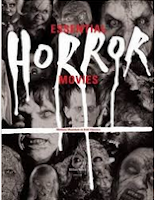
In 1967, Bonnie and
Clyde changed the face of American cinema by presenting a pair of criminals
as sympathetic heroes and not sparing the graphic bloodshed in the romantic
antiheroes’ lurid death scene. Two years later, writer Leonard Kastle visited
similar themes in his also based-on-a-true-story Honeymoon Killers, but something was drastically different at work
here. Instead of a pair of cute law-breakers who remain lovable even after they
start killing people during their heists, Ray (Tony Lo Bianco) and Martha
(Shirley Stoler) are pretty despicable from the start. He’s a sloppy con man
who marries women to bilk them. She’s a lonely heart he attempts to take for a
ride but ends up partnering with when he realizes she’s just as much of a
sociopath as he is. Ray’s dishonesty and Martha’s jealousy is a volatile combo,
and their cons turn violent. However, the big question—and one that never needs
to be asked about Bonnie and Clyde—is: do they really love each other? Well,
Martha is clearly smitten with smarmy yet sexy Ray, but what is he getting from
her? She tends to botch his cons. He does not respect her enough to honor his
promise not to have sex with his marks. Their relationship remains ambiguous
until the end when Martha makes good on a self-spiting promise she makes
earlier in the picture.
As loathsome as the couple is (before she has committed a
single crime, Martha makes a hideous anti-Semitic slur to let the audience know
exactly where she stands as a human), they are still sympathetic. This is key, since
the film would be unwatchable if this were not the case. Ray and Martha are
terrible for each other, but we do want them to find happiness in their
suburban home (they don’t) and we want Ray to quit messing around (he doesn’t).
The women the couple target elicit similarly ambiguous feelings. They are
played as fools for their religiousness or patriotism, yet their fates are
unfailingly sad. In this way, The
Honeymoon Killers pulls off a much greater feat than Bonnie and Clyde: instead of making us sympathize with a couple of
charming pretty faces, it makes us care about a cast of people who do not have
any admirable qualities simply because they’re people. In its warped way, The Honeymoon Killers is a deeply
humanistic film.
It’s also a lot of fun (again in its own warped way). Even
as each caper turns grim and tragic—increasingly so as the film
progresses—almost every character enters the frame as a high-camp archetype
that could have stepped out of a John Waters movie. There’s a lot of humor in
The Honeymoon Killers, particularly
in Marilyn Chris’s portrayal of a Southern belle who meets an ugly fate. The
riveting performances from Lo Bianco and Stoler elevate the film way above its
lowly budget, as does Oliver Wood’s cinematography.
Criterion’s new blu-ray of The Honeymoon Killers showcases that cinematography beautifully,
though inconsistencies in the original film are still apparent. At their best,
the elements are either strikingly high-contrast, deep-focus examples of
B&W photography or dreamily over-lit and soft. Some elements are rougher,
overly grainy, a bit blurry, and Criterion’s restoration does not erase those
issues or deepen a soundtrack that was always kind of lo-fi and tinny
(especially when Mahler’s music plays, though the fact that these dramatic
pieces sound as though they’re crackling from a cheap phonograph actually
compliments the camp atmosphere nicely). However, these issues are minor and
the film looks fabulous overall.
Most of the extras have been ported over from Criterion’s 2003
DVD—an interview with late director Leonard Kastle, who suggests that he
intended to make the anti-Bonnie &
Clyde; Scott Christianson fascinating illustrated essay on the real Ray
Fernandez and Martha Beck that fills in their disturbing back stories absent
from the feature film—but there’s also a new half-hour featurette featuring
interviews with Lo Bianco, Chris, and editor Stanley Warnow. It’s a fascinating
piece in which Chris discusses how she lost the role of Martha and helped Lo
Bianco and Stoler get involved in the project. Lo Bianco and Warnow explain how
Martine Scorsese began directing the film only to get fired for using too much
film on such a low-budget project and was ultimately replaced by writer Kastle
who’d never made a film before and never made another one again. As such, The Honeymoon Killers stands as one of
the great one-offs in the tradition of Charles Laughton’s The Night of the Hunter.










